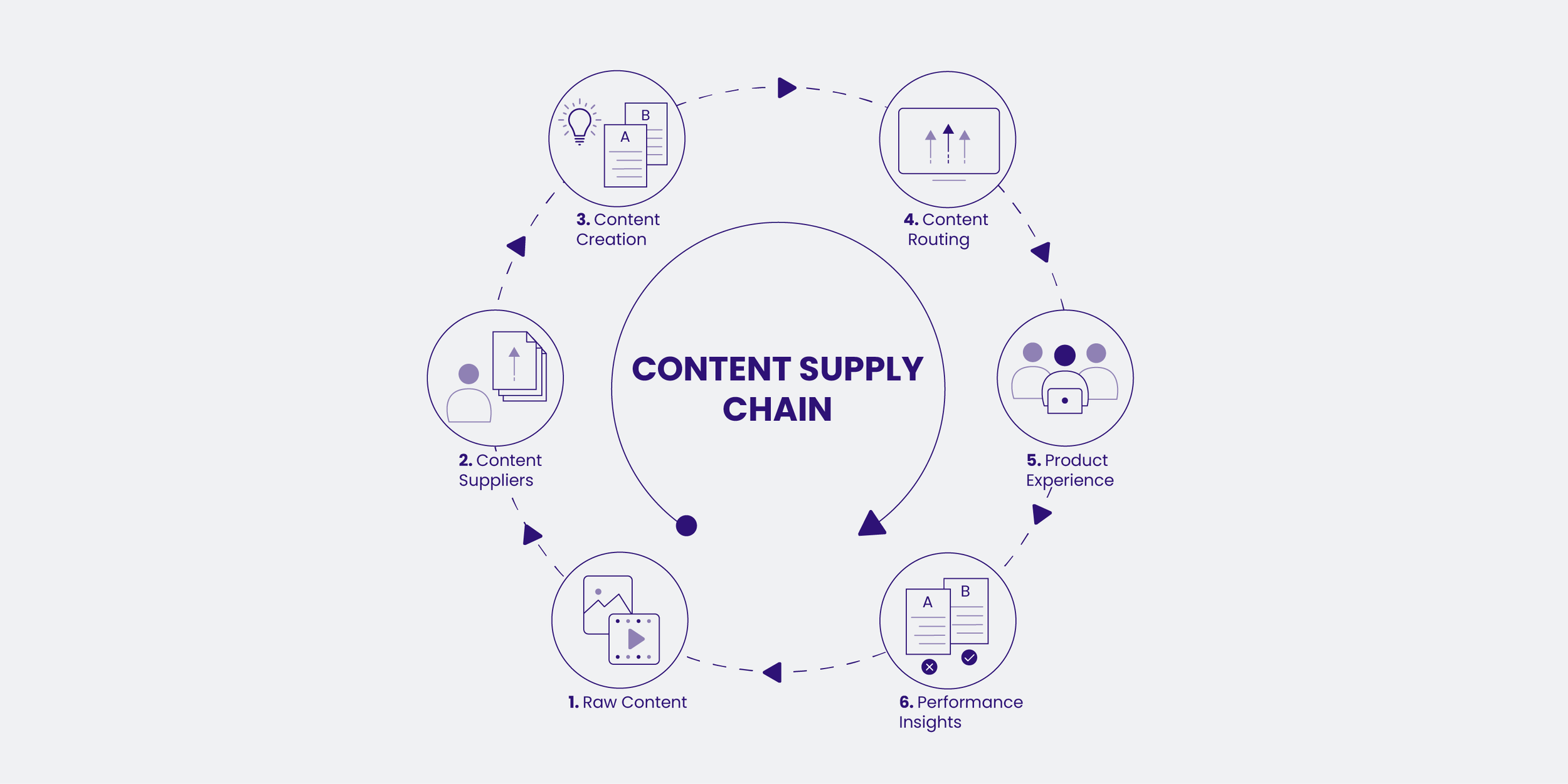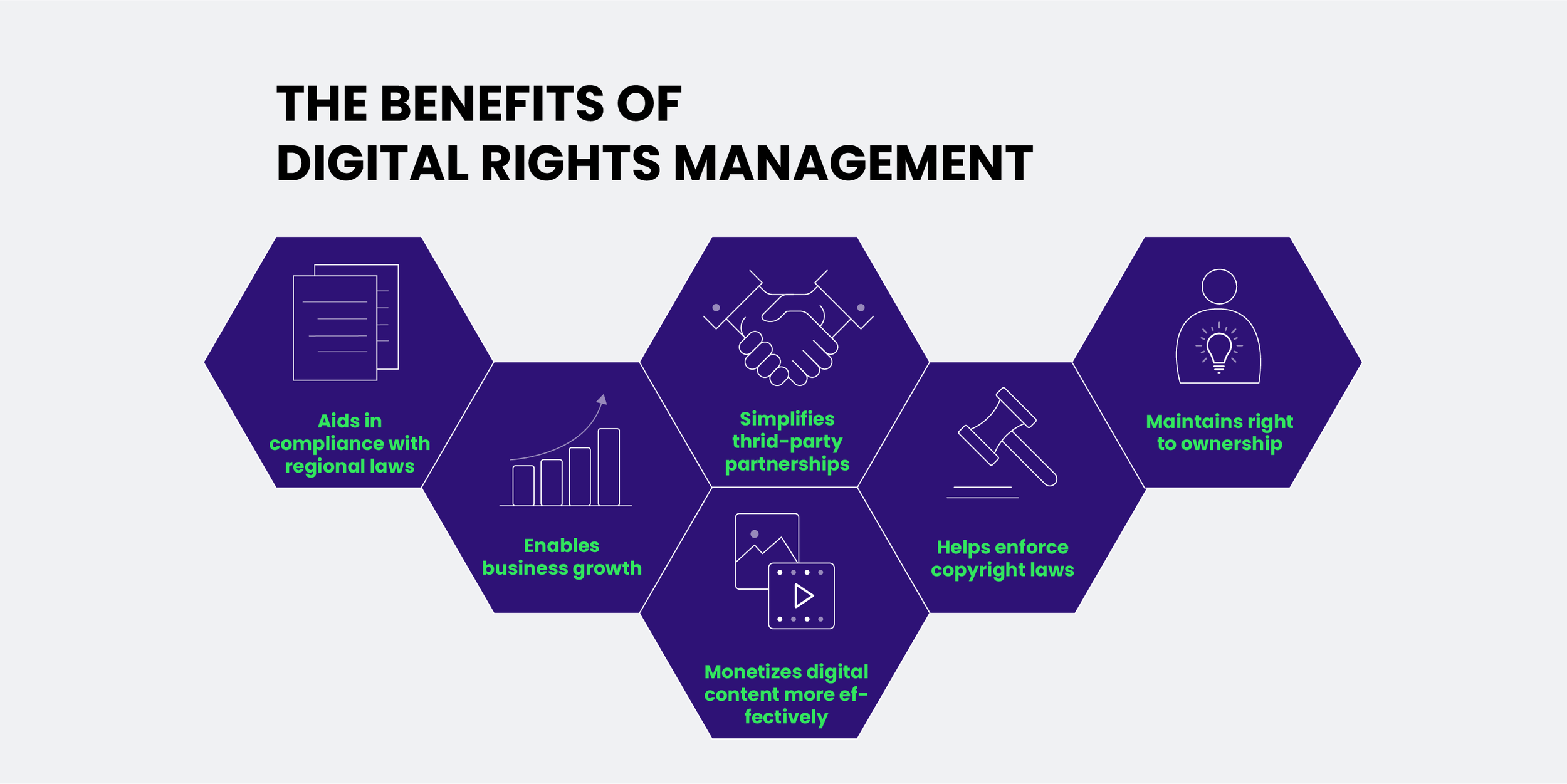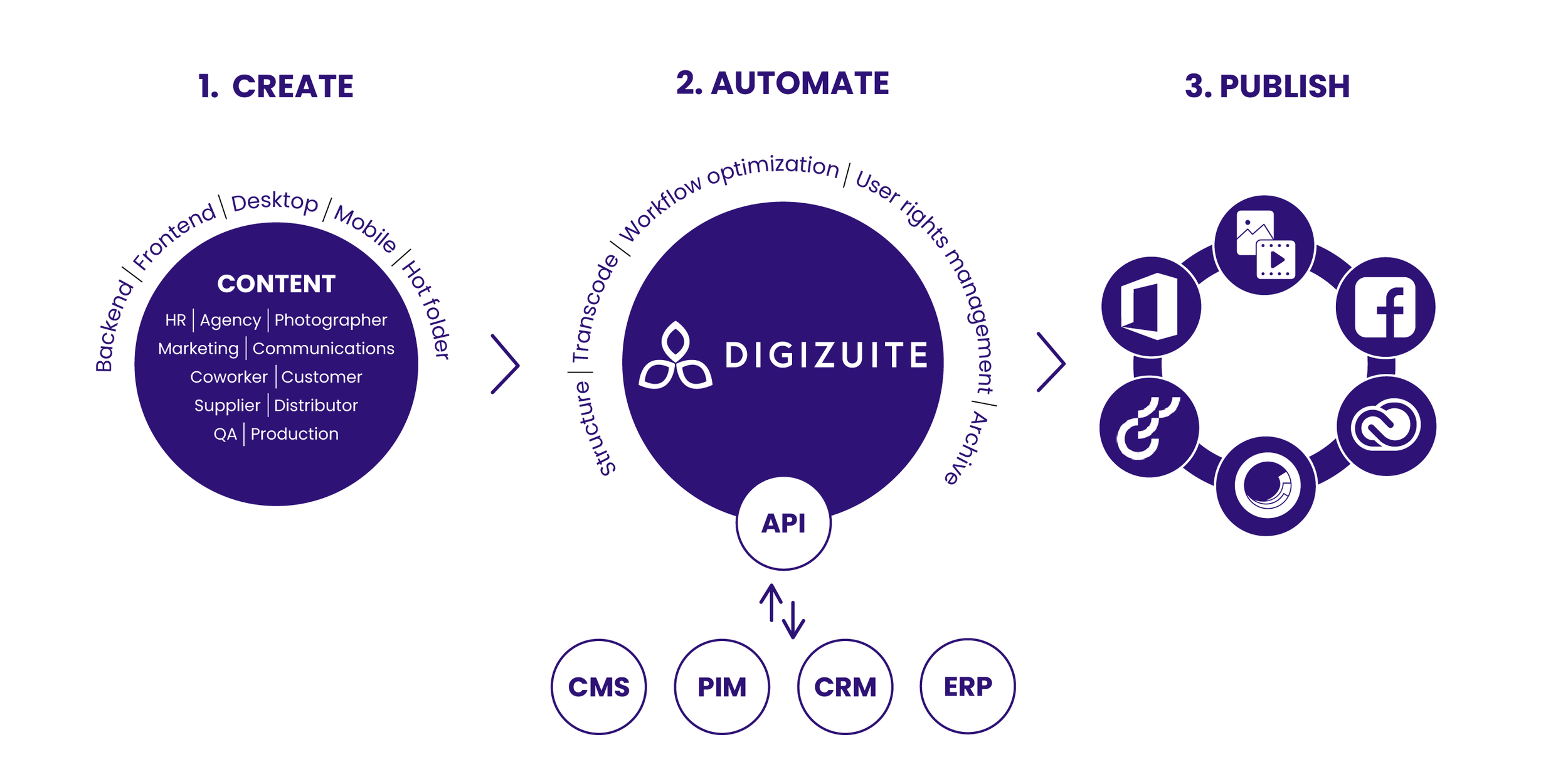8 Ways To Improve Your Content Supply Chain
B2B companies know how powerful their content is.
In fact, 92% of both B2C and B2B marketers name content as their most valuable and more important marketing asset.
However, content marketing in today’s day and age comes with a few content management challenges, such as:
> Maintaining that fast speed, volume and quality of content
> Efficiently managing their content
> Having the right processes of approval and
> Having the right modes of content promotion
Adding on, 28% of businesses even report that they struggle with having a clear and well-constructed content marketing strategy.
Which concerns a lot of businesses, when you think about the fact that 93% of B2B marketers use content marketing.
So how can businesses work away from these challenges, all whilst maintaining a successful content strategy?
Answer: By improving their content supply chain.
Having the best content supply chain is crucial for companies looking for a more agile process when it comes to creating, managing and distributing content.
And it's pricey too. McKinsey found that businesses (like OEM) spend up to $50 million to $75 million dollars on a content supply chain, and global technology companies spend up to $300 million dollars.
In this article we discuss exactly what a content supply chain is, which benefits come along with improving it and 8 ways how you can optimize it - all by help of a tool called DAM.
What is a content supply chain?
A content supply chain is most easily understood as a process where you look at the key parts of all things content production:
> The planning of content
> The creation of content
> The management of content and the
> Distribution of content to all your channels (i.e. in the omnichannel)
Take manufacturing, for example. A content supply chain within manufacturing is all about all the steps and stages it takes to deliver content efficiently to distributors and consumers.
It all starts with creating content - you have your raw material (like unedited images and videos) that need to go through a systematic process in order to reach the consumer - and have the desired effect.
The idea is that you want all of this to happen smoothly, and in the most seamless way possible.
With all of the steps in mind, it's crucial that companies take the necessary precautions in order to make sure every stage is done correctly, but also as efficiently as possible.
That brings us to the core of this article, which is how one can improve the content supply chain.
But first, some benefits of improving it…
Benefits of optimizing your content supply chain
Once you make the decision of improving your content supply chain, you should start to see:
A much better, and more efficient way to organize assets: This has a ripple effect on how well content and assets are handled.
Faster distribution and creation of content: More defined methods and process makes it easier to deliver on time, when necessary.
Less costs of producing content: This is because you save more resources due to a more systematic and controlled process. It's also a by-product of making fewer mistakes.
Your content production scales alongside your organization.
Improved quality of all things content: This is because everyone has more understanding of exactly what they need to do and why - making it easier for people to focus on their own task at hand and perform better.
Less mistakes: Once you make it clear which responsibilities people have and when they need to deliver them, collaboration and cohesion with the company is boosted. This helps avoid misunderstandings and miscommunication.
8 Ways To Improve Your Content Supply Chain
Boost content creation by providing product data to all users
You can’t improve your content supply chain without content.
That’s why it's crucial to optimize the step of content creation within your content supply chain - in order to make sure every step following adheres to the same standard.
The key way to improve this step is by avoiding bad quality, faulty or non-compliant content.
You don’t want to risk content being released that puts the brand in the wrong spotlight, or spreads misinformation.
But how do you make sure your content is well-produced, in line with regulations and has the ability to give a personalized experience?
The remedy lies in marketing tools and technology.
A DAM (digital asset management) tool will help you collect all the data pertaining to a product, and spread this across the entirety of the organization (like the creatives, video editors, photographers, etc.).
The result?
All users know exactly what to include when creating content about a product/ service, and everyone knows the procedures and requirements.
Bring all your content together, in one place
Another sure-fire way to improve your content supply chain is by making sure all marketing collateral (aka content) is found in one, strategic place.
How? Metadata.
By embedding this metadata into every single piece of visual content you use to create your collection of marketing material, you create an optimized process for content creation, management, and distribution.
That way it’s easier for all members of the organization to not only find the content they need, when they need it, but they also understand which content to use (and which not to use).
So that when you go from content creation to content distribution in the supply chain - you know you’re releasing the right stuff.
Digital asset management tools have this kind of strategic archive at their core - a centralized library that helps both external and internal teams when it comes to finding that crucial (and approved) piece of content.
Enable a faster search for content
In order for all the steps of the process within your content supply chain to go around, there needs to be an improvement in terms of how fast things get done. I.e. searching for the right content when you need it.
Because the faster you’re able to get your hands on the content you need, the faster (and the more seamless) you get to that transition from the content creation step to the content distribution step.
In addition, once you make it easier to search for content more efficiently, you’ll actually stop facing the consequences for unused content, since you’ll actually find what you’re looking for.
How do you get there?
By using DAM, which will give you the needed search and AI capabilities to help you find branded content much faster. That way you get the content you need for those websites, campaigns and for your e-commerce strategies.
Customize your content and assets for the right channel
Another way to improve your content supply chain is by more efficient tailoring of your content to fit the respective channels.
Because let's face it, no marketer wants to deliver a poor product experience because your photo didn’t match the criteria of posting on Facebook.
Customizing your content is a huge part of the content management stage in the content supply chain - and it's the part where you can decide how much of an influence your content can have - provided it hits the right channel, in the right style.
Tools like DAM give you the means to make sure every piece of content is tailored for the right channel and/or device - helping you achieve your omnichannel marketing objectives.
How?
For every single set of: 1. Users 2. Metadata or 3. Distribution channel or group, DAM can provide a number (read: a limitless number) of:
Asset formats
Asset styles or themes
Resolutions
Proportions
Improve collaboration and break down silos
Furthermore, the only way to make sure your content supply chain works seamlessly and efficiently step by step - is by making sure that the people involved in the process are on board with one another.
In other words, it's crucial that you improve collaboration and empower your teams as much as possible.
Which in many cases, revolves around breaking down those silos.
One way to really increase that collaboration across teams is by implementing the right tech, like DAM.
DAM helps break down silos by having “one central source of truth” when it comes to digital assets, through one strategic platform.
That way you avoid different people having access to different files - as the result of that is a mess: You’ll have disintegrated masses of assets found across different drives, image banks, cloud solutions and servers.
DAM helps you avoid losing track of all this marketing collateral (which could potentially lead to damage to your brand as you might release expired content) whilst simultaneously boosting collaboration. By:
1. Breaking down those silos and,
2. Streamlining the workflows that external and internal teams use, making them work faster and smarter
Make sure content adheres to guidelines & digital rights management
A content supply chain can only become better if the content included is approved and adheres to the right regulations. That’s where Digital Rights Management (DRM) comes in.
DRM plays an important role in optimizing your content supply chain - and making sure that all assets are approved.
The easiest way to do this is by using DAM, which you need to not only keep up with regulatory compliance and GDPR, but also makes it possible to embellish your assets with the:
> Date of expiry
> Origin
> Sponsor
> Photographer
> Rights owner
In the end you can be sure that the content going around in the chain is actually the right content, and not something that can bring upon fines or other negative consequences.
Advance your content distribution methods
A big part of improving your content supply chain is avoiding content chaos when it comes to the management and distribution part of things.
Lets face it, you could be dealing with too much content in the first place, but even if you have control over all this content, the tricky part is getting it distributed in the best (and most right) way possible.
So how do you make sure this bridge between content management and content deployment is done better, each time?
A DAM system can help you with the send-off of content: No matter the customer, device or channel.
A DAM will:
Make sure your content is channel-agnostic (by tailoring the right content to the right channel)
Orchestrate and organize data from various sources before distributing them to channels
In the end, help you access more revenue streams through increase end-points and channels
Easier distribution means easier completion (and restart) of the process that is your content supply chain.
CMS (content management systems) are often used alongside a DAM to not only control digital content, but also deliver this more efficiently by improving workflows and making it easier to re-use content across different channels and websites.
Furthermore, if you combine your DAM with your PIM (product information management), you’ll reap multiple benefits: Through automation, it will help you avoid having to duplicate your assets across domains and you’ll increase time to market by not having to upload manually to different channels or platforms.
Tailor and localize your content to global markets
Another way to improve your content supply chain is by making sure your content is actually applicable to more than just one target audience.
That way you actually make the most of your digital supply chain - that every single step goes beyond just one niche, or one market. And right into buyer experiences across the globe.
Again, by the hands of tools like DAM, this is easily done.
Modern digital asset management tools come with the skills of translation - in fact, most of them support AI translation that includes (but not limited to) auto-tagging to multiple languages.
This means that not only are you optimizing content creation, management and distribution to fit more than just one shoe…
…you’re also adhering to a way more effective method of localization to global markets by not having a bi-lingual employee do all of the translation and tagging.
Level up your content supply chain with DAM
Improving your content supply chain is vital if you a) want your content to have the intended effect every time and b) that everyone in your organization remains on the same page.
That's why you should take certain measures to boost your digital content supply chain, which a few are:
Boosting content creating by providing product data to all users
Bringing all your content together in one strategic place
Enabling a faster search for content
Customizing your content and assets for the right channel
Improving collaboration and breaking down silos
Advancing your content distribution methods
Tailoring and localizing your content to global markets
Making sure content adheres to guidelines & digital rights management
DAM can help out with each of these areas, and is a tool that helps all organizations (particularly large enterprises) in ways beyond just keeping assets in one place.
Want to learn more about how your organization can benefit from a DAM?
Book a call with one of our experts today.
Resources you’ll love






